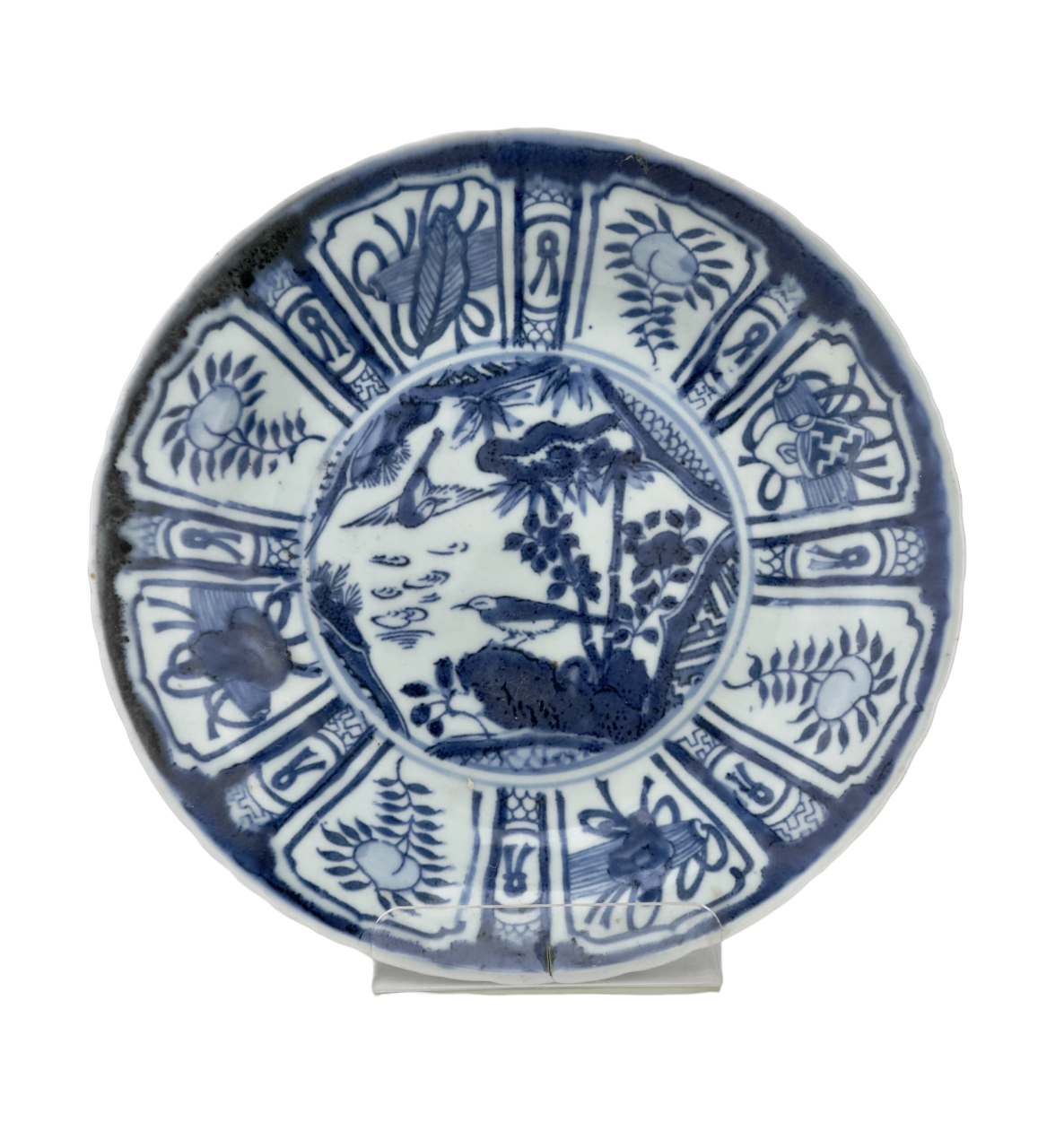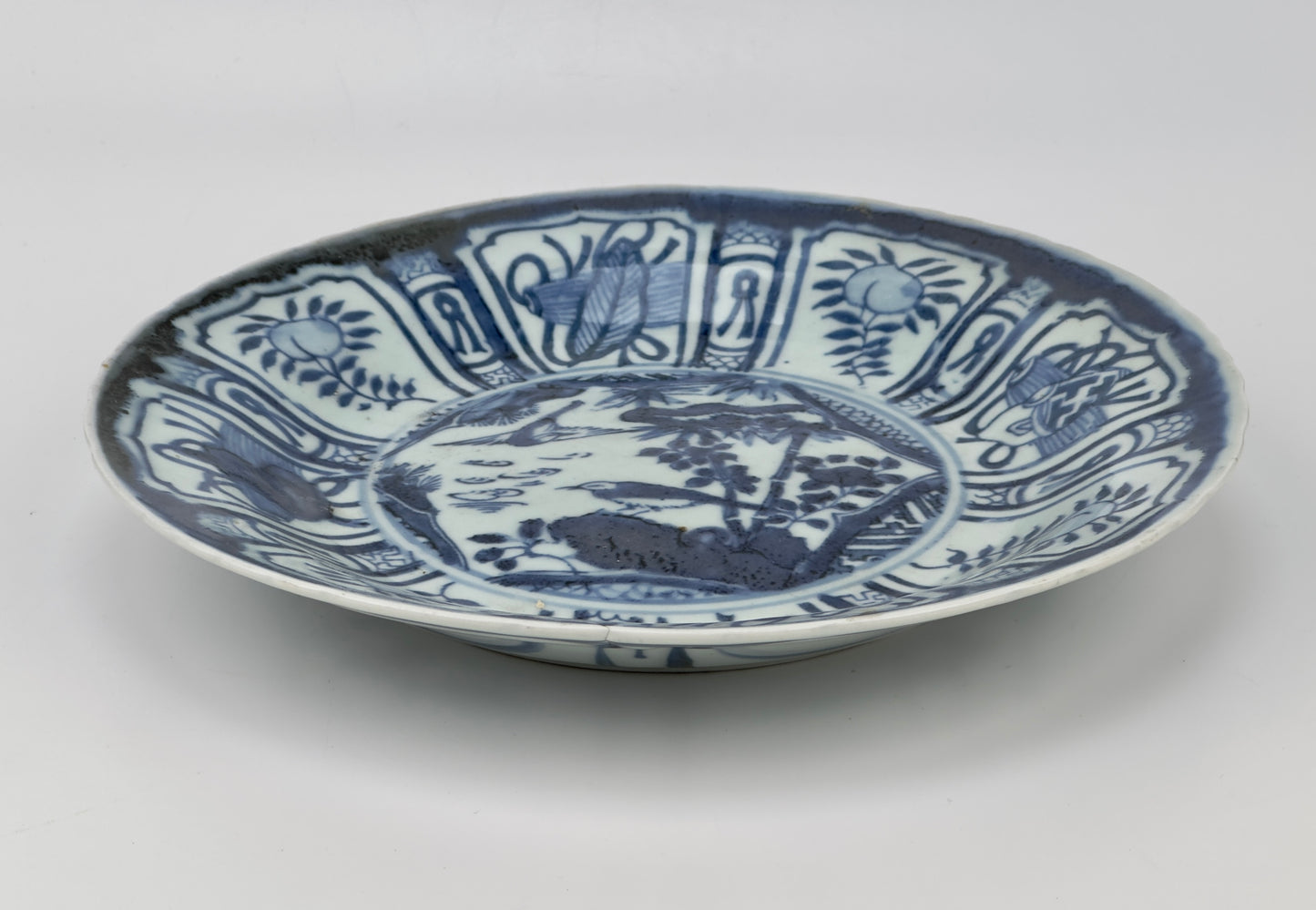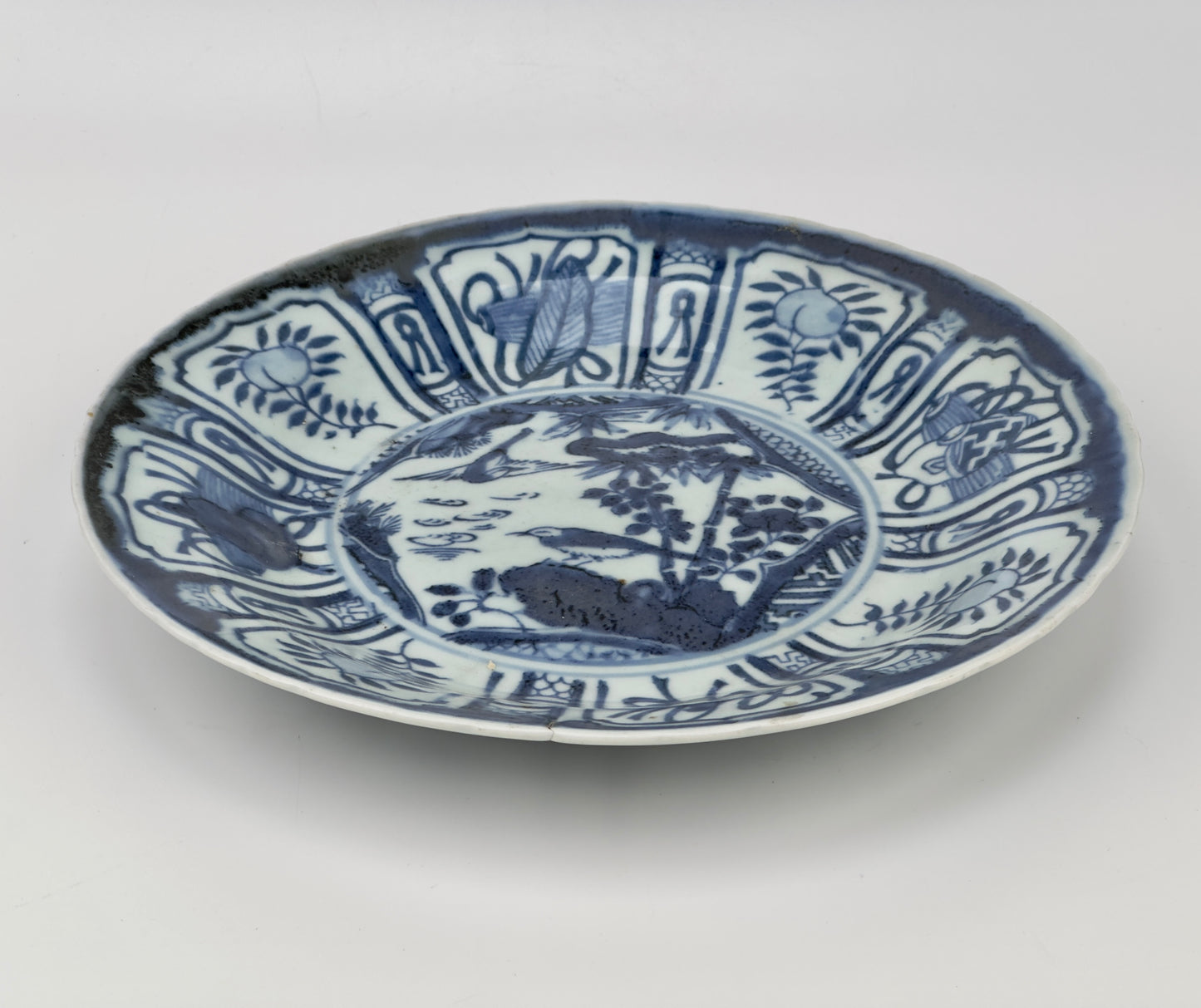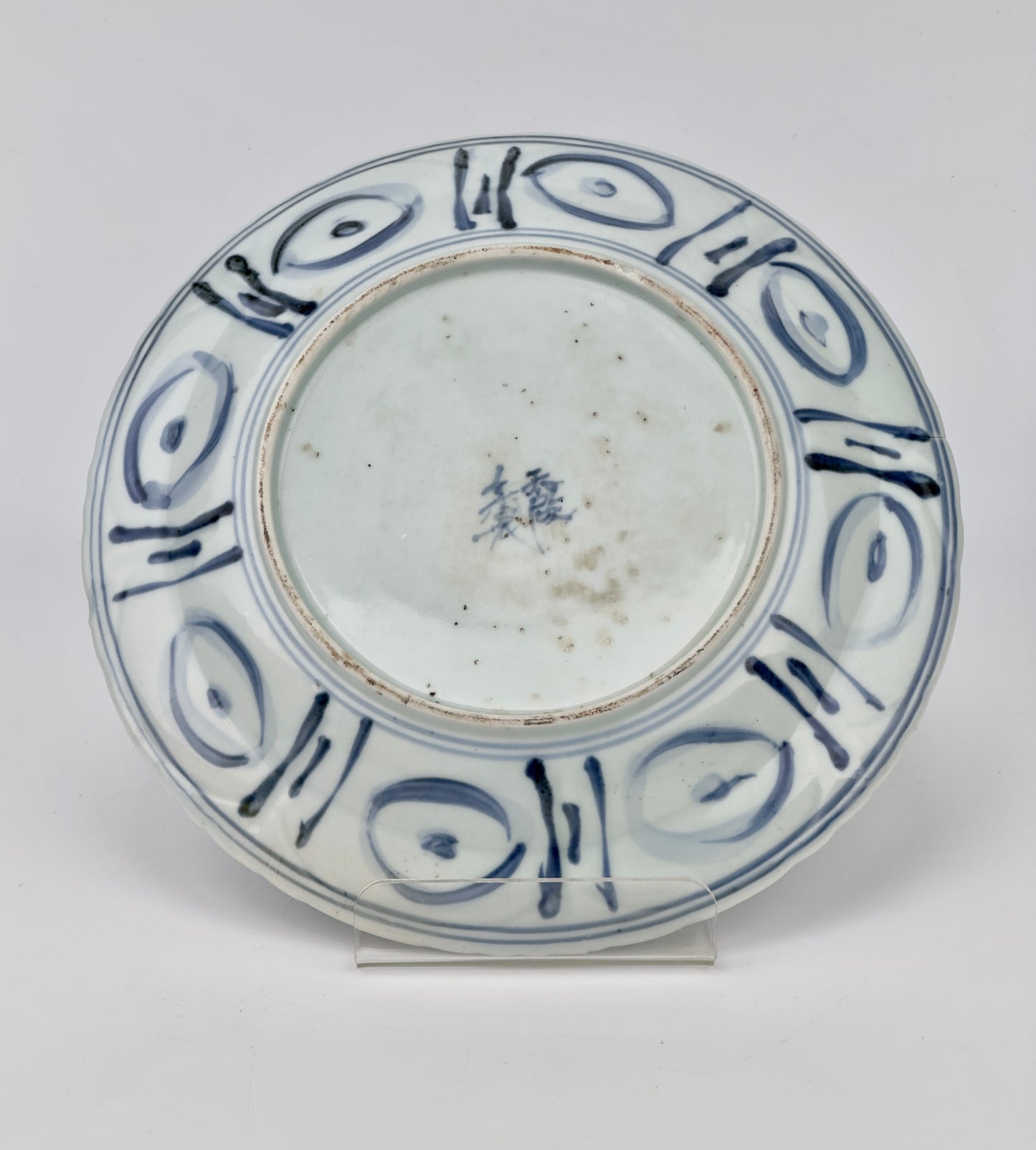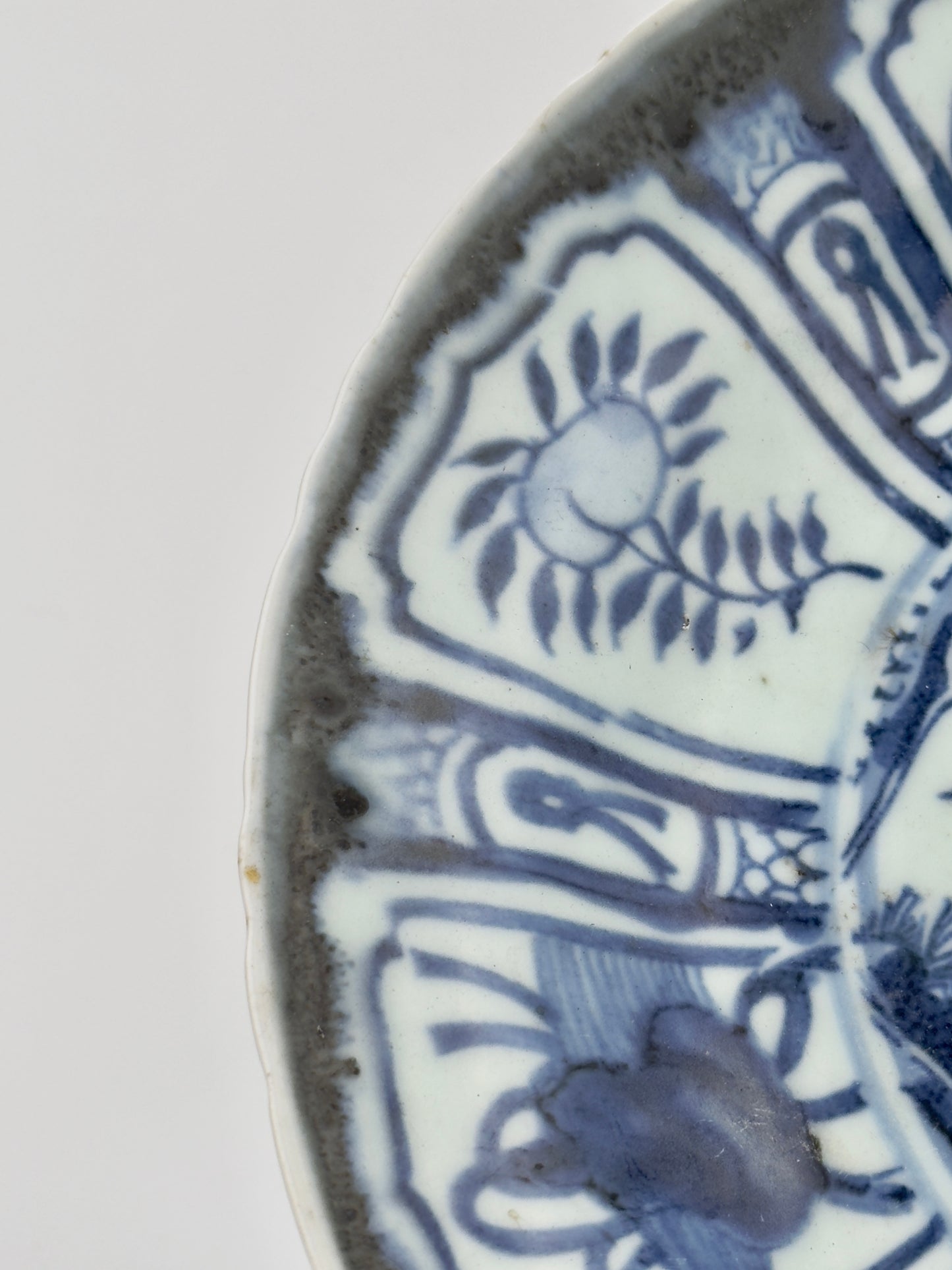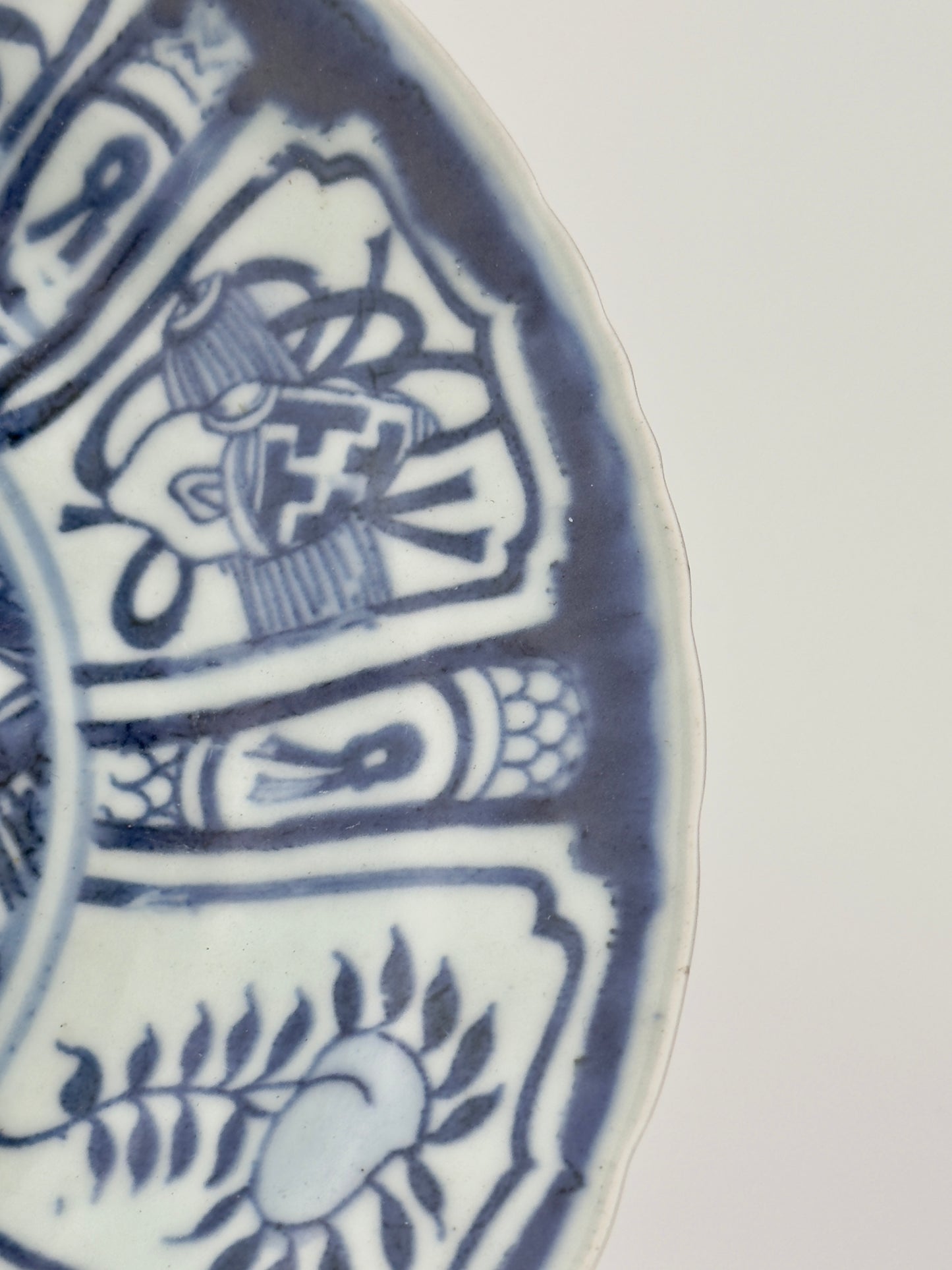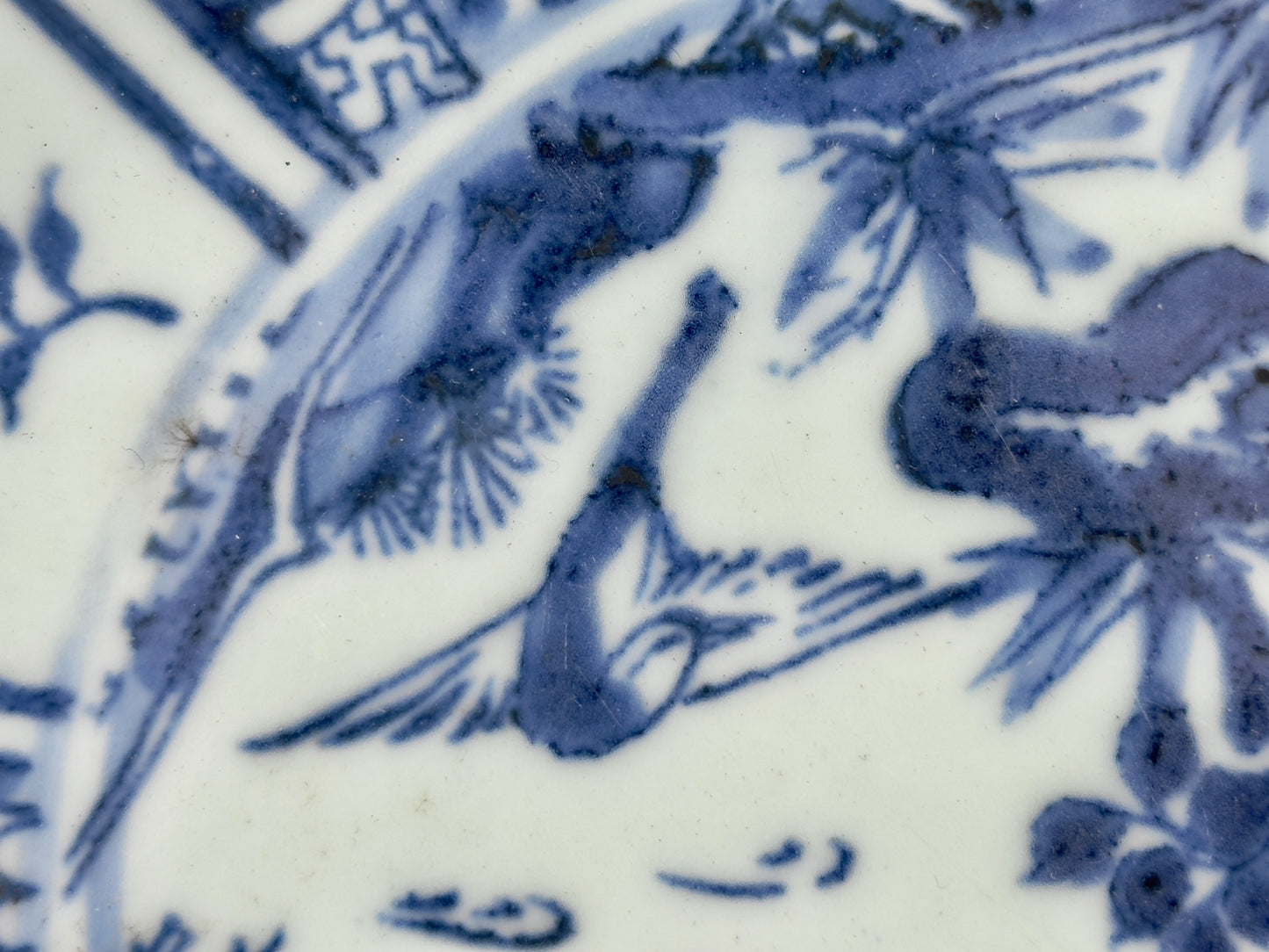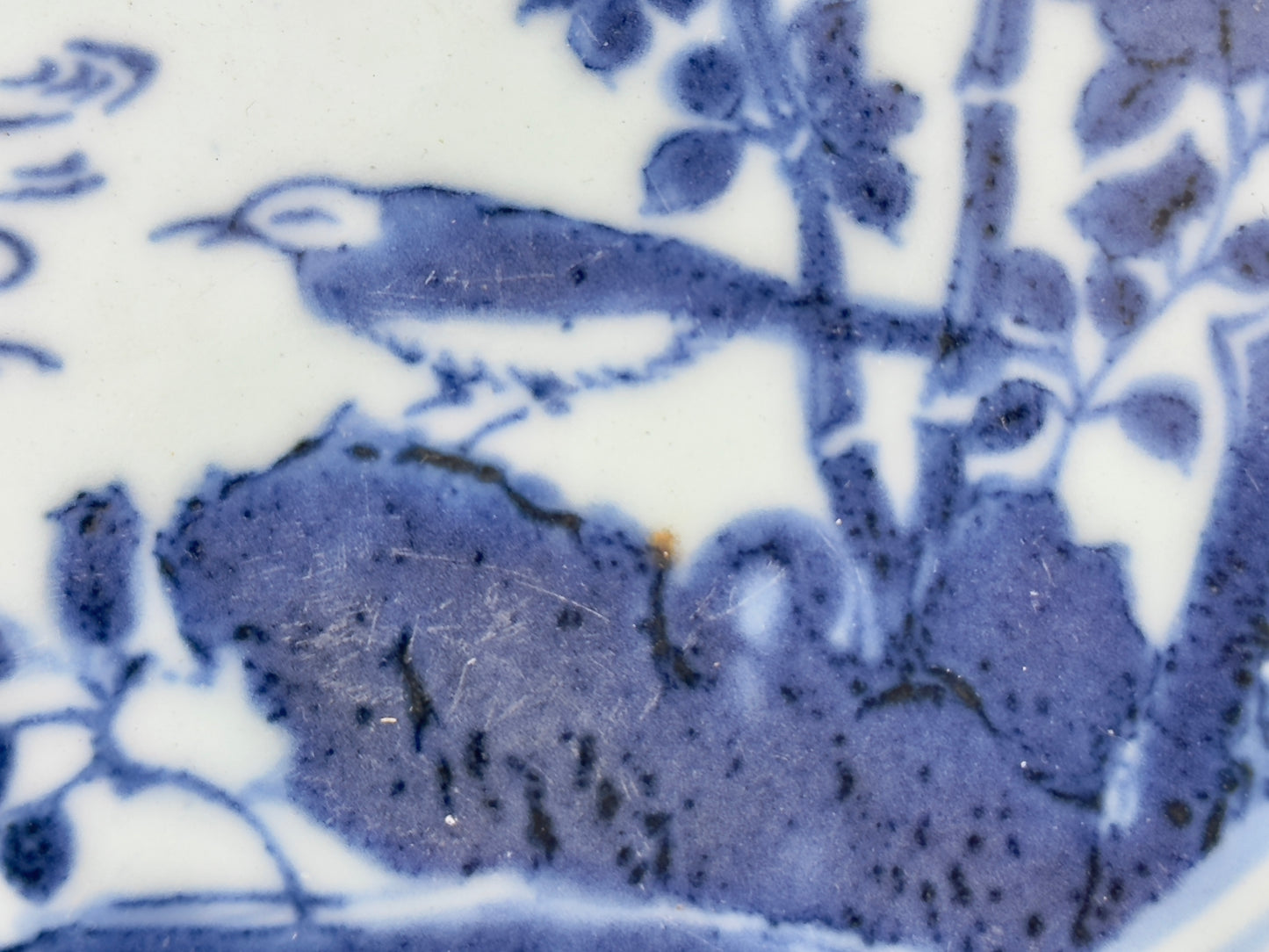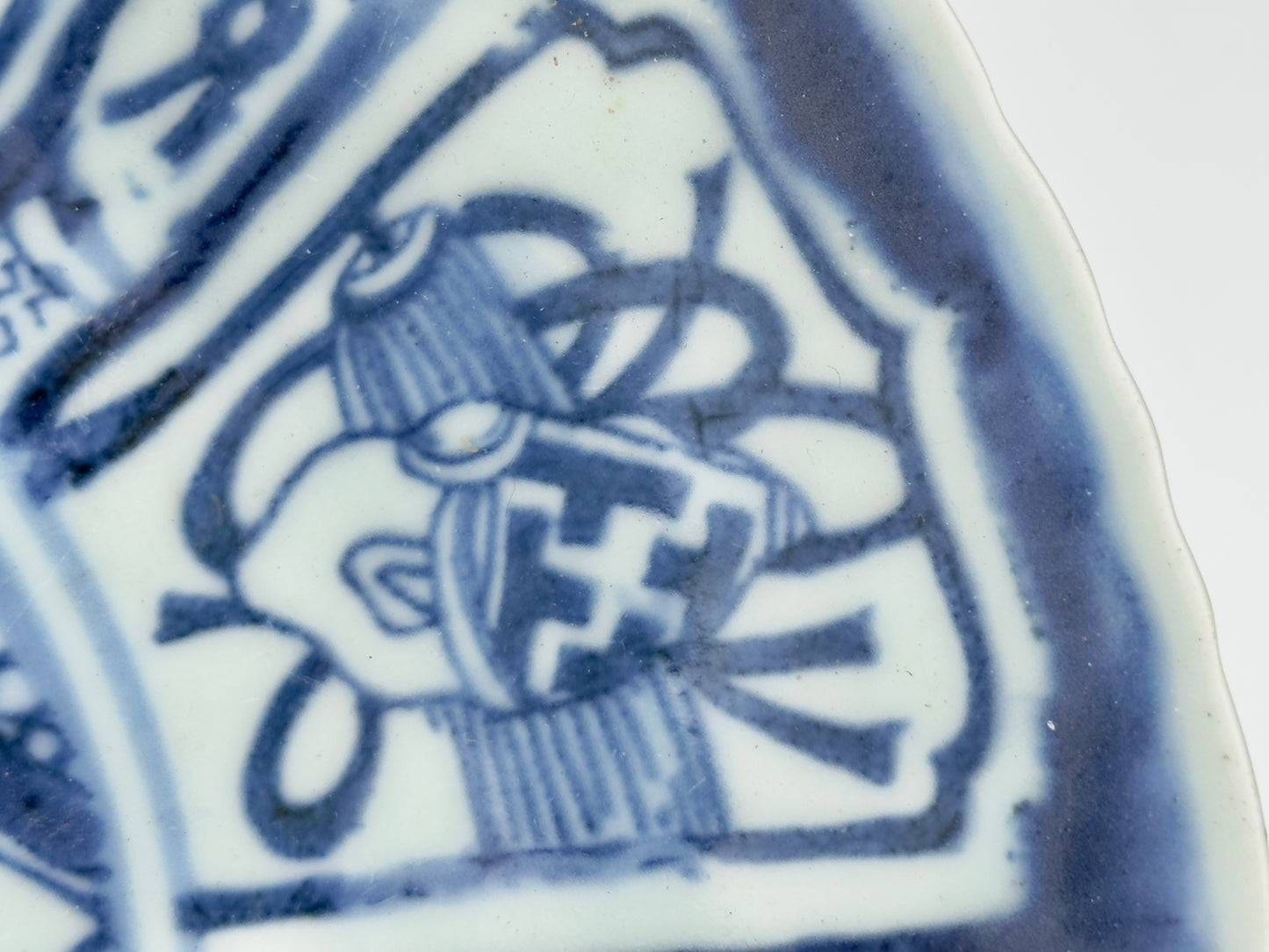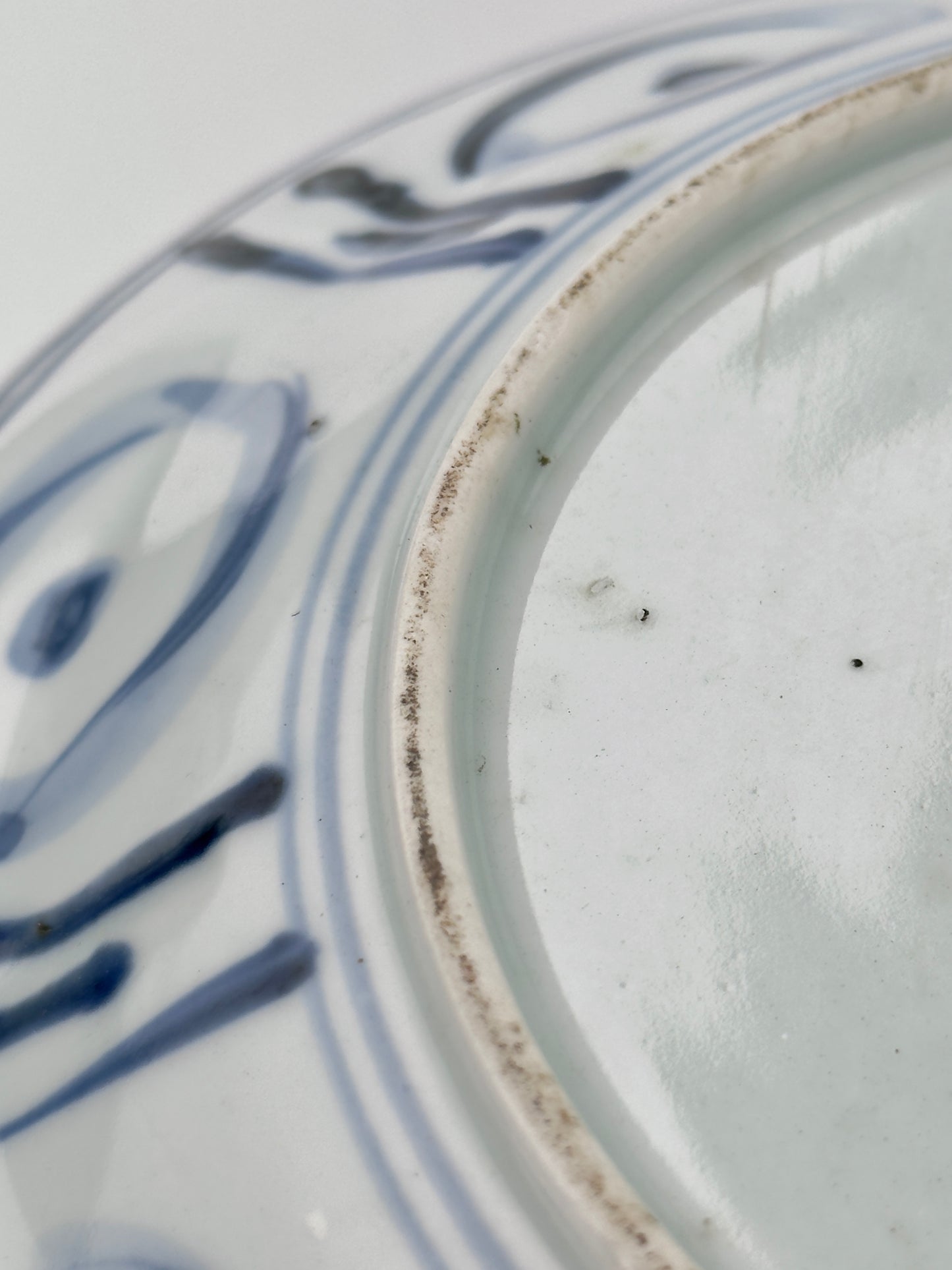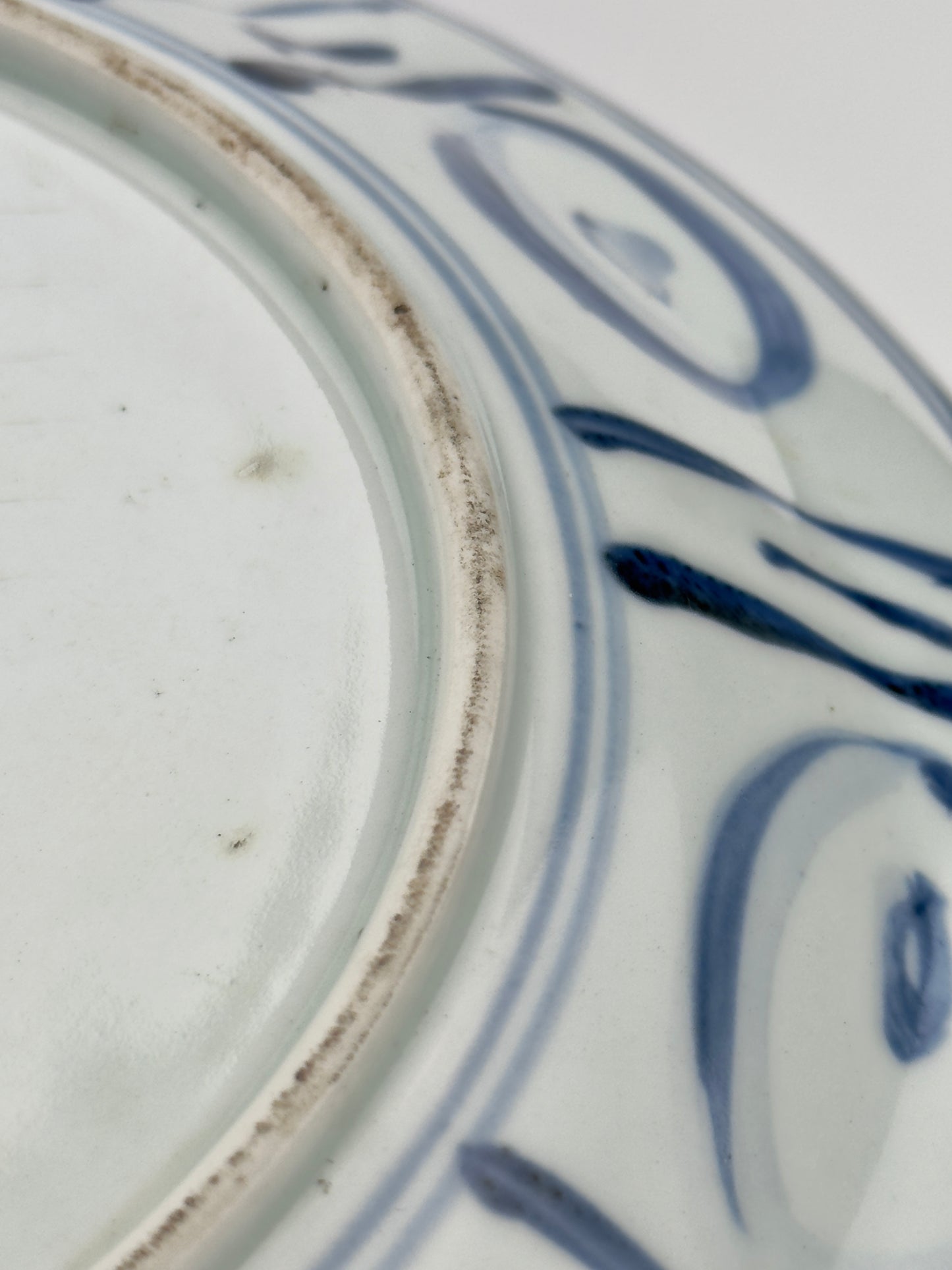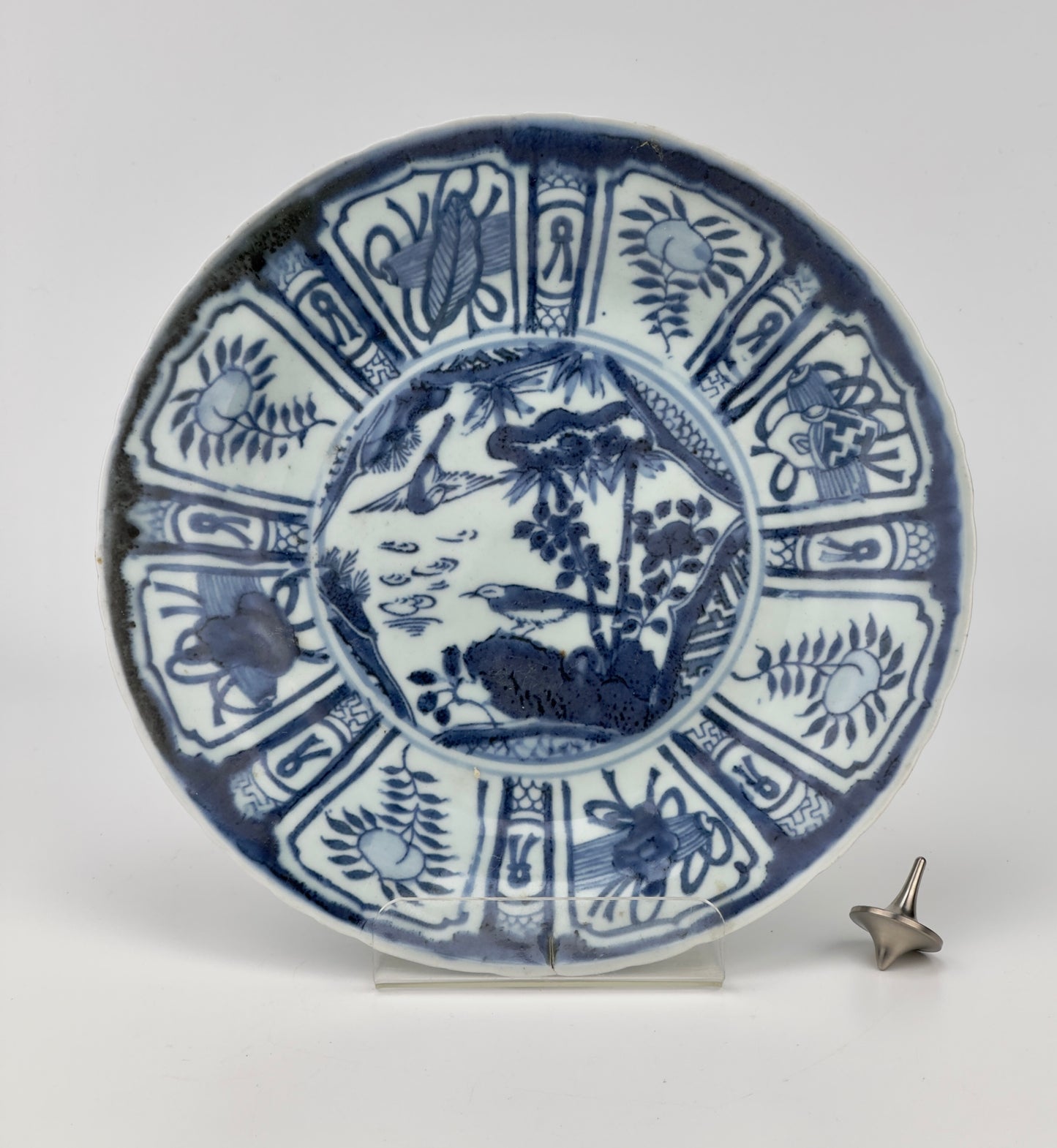AUA Oriental Art
Blue And White Kraak Plate, Late Ming Dynasty
Blue And White Kraak Plate, Late Ming Dynasty
Couldn't load pickup availability
A Chinese blue and white Kraak plate, the central roundel depicting birds and floral design in a waterside, the rim with panels enclosing foliage and decorative objects.
Period: Late Ming-Early Qing Dynasty (17th century)
Type: Blue and White Porcelain
Dimension : 3 cm(Height) / 26cm(Diameter)
Provenance : Acquired early 2000s from Southeast asia(Probably from Shipwreck)
Reference :
1) Sotheby's London 12 November 2019 - STYLE: Private Collections - Lot 12
(Price range : 3,000GBP-5,000GBP / Type : Closely related)
https://www.sothebys.com/en/buy/auction/2019/style-private-collections/a-large-blue-and-white-kraak-dish-ming-dynasty-3
2) Christies NEW YORK - 1–11 MAY 2018 - THE COLLECTION OF PEGGY AND DAVID ROCKEFELLER: ONLINE SALE - Lot 1405
(Price realised : 5,625 USD / Type : Highly related)
https://onlineonly.christies.com/s/collection-peggy-david-rockefeller-online-sale/chinese-blue-white-kraak-dish-1405/54999
* Kraak
Kraak porcelain is a type of Chinese export porcelain that was produced during the late Ming Dynasty, especially during the reign of the Wanli Emperor (1573-1620). It is famous for its distinctive design and style. Kraak ware typically features paneled decorations surrounding a central, more elaborate image. Each panel is often decorated with various motifs such as animals, flowers, or geometric patterns, while the center often depicts landscapes or figures.
This porcelain is relatively thick and large, with a hard, glossy glaze that adds to its durability. Kraak porcelain had a significant impact on the European market and inspired the development of porcelain manufacturing techniques in Europe. The name "Kraak" is believed to derive from the Dutch, who were the primary traders exporting these wares, reflecting its connection to Dutch merchant activities. Today, Kraak porcelain remains highly popular among collectors and is an important part of Chinese ceramic arts
Share
